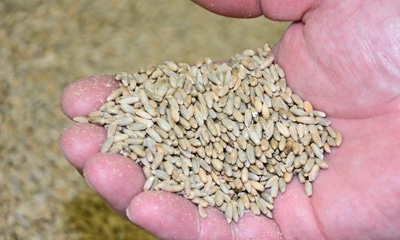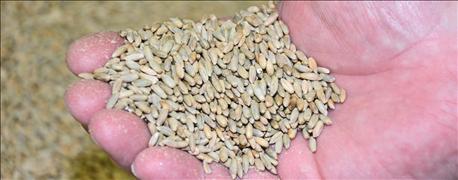September 29, 2016

In a recent blog by Jochum Wiersma, Scotty Wells and Axel Garcia y Garcia, the University of Minnesota Extension crop specialists discuss rye’s reputation in the U.S.
Currently, rye is looked at as a cover crop, they note. Why? The allelophatic attributes of rye help suppress small-seeded weeds while its drought tolerance and winter-hardiness make fall establishment as a cover crop nearly fail-safe.

FEED AND FOOD: Rye is more commonly used in Denmark and Germany than the United States. It's both feedstuff and human food in Europe, where it serves as a way to reduce antibiotic use and stress for hogs in group housing systems.
Rye is, however, used in other parts of the world as both feed and food, they say. Pumpernickel bread comes to mind. And those of Scandinavian descent may have grown up with knäckebröd. They also point out that as a feedstuff, rye has some interesting properties that have grabbed the attention of hog producers in Denmark and Germany as a way to reduce antibiotic usage and stress in the group housing systems, both mandated by law.
Here are some key points in their blog:
• Rye’s Achilles' heel remains the presence of ergot in the harvested grain. Ergot is the sclerotium, or survival structure, of the fungus Claviceps purpurea. Removal of the sclerotia is cumbersome but imperative if the rye is to be used as either food or feed, because it is the cause of ergotism or St. Anthony's Fire. Rye is inherently more prone to ergot infections as it is a cross-pollinator, whereas wheat, barley and oats are self-pollinators. Having good seed set combined with genetic resistance to infections greatly reduces the number of ergot infections.
• Little to no variety development has been done in North America in recent decades. The Samuel Noble Foundation in Oklahoma has continued to develop rye varieties for grazing, while Steve Zwinger at the Carrington Research Extension Center at North Dakota State University has maintained a small breeding program. His work has resulted in the first new rye variety in the region in over two decades, with the release of ND Dylan by NDSU last winter. Meanwhile, a number of European breeding companies, most notably KWS and Saaten-Union, have developed a system to produce hybrid rye seed.

Above are the results of trials evaluating U.S. and European winter rye varieties across five locations in Minnesota. Data from 2015 and 2016 are combined.
• U-M reinstated a rye variety performance evaluation in fall 2014. Preliminary yield data over two years of trials with both North American and European germplasm show that not only the grain yield potential differs greatly among the older Canadian and U.S. varieties, but also that the best European hybrid ryes outpace the best North American germplasm by nearly a third. Not all of these hybrids are commercially available in the U.S. at this time. Nonetheless, the data do show the potential of rye as a grain crop and not merely a cover crop in Minnesota.
Source: U-M Extension Crop News
You May Also Like




